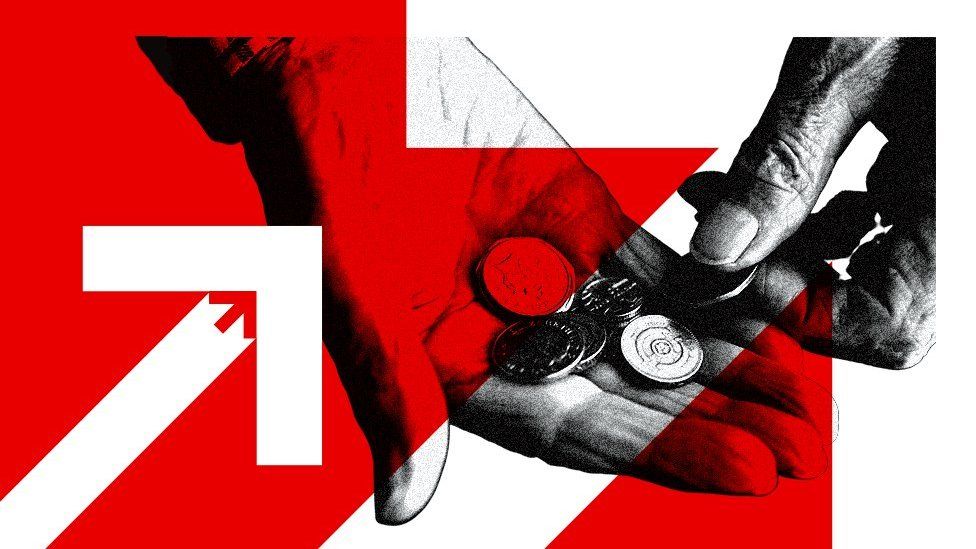
Prices in the UK are no longer rising as fast as wages, official figures show.
However, inflation of 4% in January was still significantly above the Bank of England’s target, meaning knock-on effects for interest rates.
What does inflation mean?
Inflation is the increase in the price of something over time.
For example, if a bottle of milk costs £1 but is £1.05 a year later, then annual milk inflation is 5%.
How is the UK’s inflation rate measured?
The prices of hundreds of everyday items, including food and fuel, are tracked by the Office for National Statistics (ONS).
The ONS looks at price changes over the previous 12 months to calculate inflation.
One reason for January’s 4% inflation figure was a rise in the cost of gas and electricity costs, it said.
The Bank of England also looks at “core inflation” when making decisions about interest rates.
This excludes the price of energy, food, alcohol and tobacco – which can change often – to get a closer picture of price rises.
Core inflation was 5.1% in January.
Why are are we still seeing big price rises?
Up to now soaring food and energy bills have been the main cause of high inflation.
Oil and gas were in greater demand after Covid and prices also surged when Russia invaded Ukraine, cutting supplies.
The conflict also reduced the amount of grain for sale, pushing up food prices.
It led to inflation hitting 11.1% in October 2022, the highest rate in 40 years.
The rate has fallen since then, but lower inflation doesn’t mean prices are falling – just that they are rising less quickly.
Most things will cost more than they did before.
Your device may not support this visualisation
What can be done to lower inflation?
The Bank of England’s target is to keep inflation at 2%.
With inflation remaining much higher than this, the Bank increased interest rates to 5.25%.
The theory is that by making borrowing more expensive, people will have less money to spend. They are also encouraged to save more as saving rates increase.
In turn, this reduces demand for goods and slows price rises.
But it’s a balancing act – by increasing borrowing costs there is a risk of harming the economy.
For example, homeowners face higher mortgage repayments, though they can get better deals on savings.
Businesses also borrow less, making them less likely to create jobs. Some may cut staff and not invest.
When will inflation go down?
Are wages keeping up with inflation?
Wage growth is currently outpacing price rises, official figures show, but pay is not rising as quickly as it was.
Pay, excluding bonuses, grew by 6.2% in the last three months of 2023 compared with the same period a year before.
Several industries, including rail, healthcare and education, have gone on strike over pay.
The government has argued that big pay rises could push inflation higher because companies might increase prices as a result.
What is happening to inflation and interest rates in Europe and the US?
Many other countries have also been experiencing a cost-of-living squeeze and higher interest rates.
But UK inflation remains higher than in the EU and US.
The annual inflation rate for countries using the euro was estimated to be 2.9% in the year to December.
At its December meeting, the US central bank kept its key interest rate unchanged between 5.25% and 5.5% for the third time.

